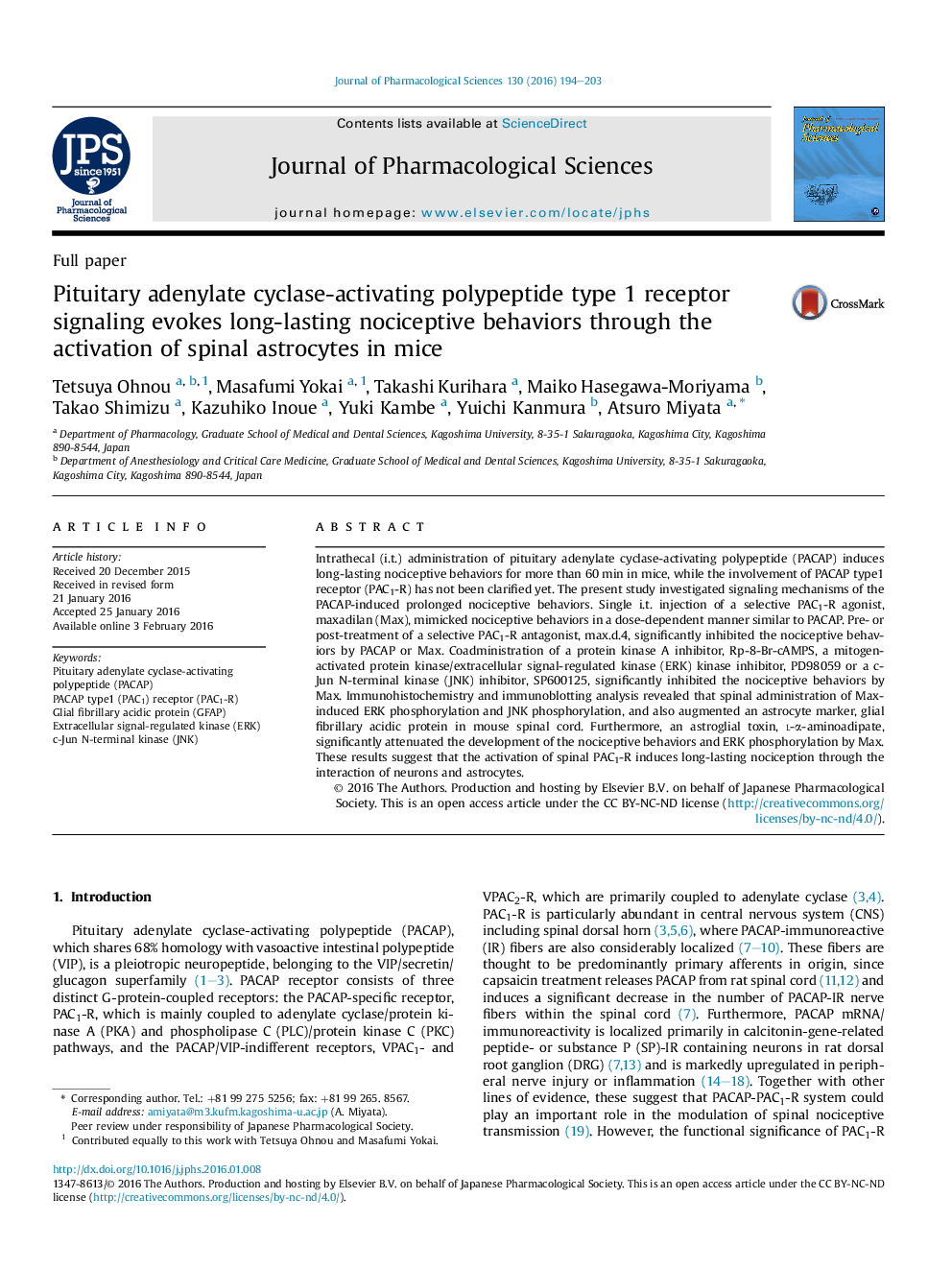| کد مقاله | کد نشریه | سال انتشار | مقاله انگلیسی | نسخه تمام متن |
|---|---|---|---|---|
| 2548703 | 1560468 | 2016 | 10 صفحه PDF | دانلود رایگان |
Intrathecal (i.t.) administration of pituitary adenylate cyclase-activating polypeptide (PACAP) induces long-lasting nociceptive behaviors for more than 60 min in mice, while the involvement of PACAP type1 receptor (PAC1-R) has not been clarified yet. The present study investigated signaling mechanisms of the PACAP-induced prolonged nociceptive behaviors. Single i.t. injection of a selective PAC1-R agonist, maxadilan (Max), mimicked nociceptive behaviors in a dose-dependent manner similar to PACAP. Pre- or post-treatment of a selective PAC1-R antagonist, max.d.4, significantly inhibited the nociceptive behaviors by PACAP or Max. Coadministration of a protein kinase A inhibitor, Rp-8-Br-cAMPS, a mitogen-activated protein kinase/extracellular signal-regulated kinase (ERK) kinase inhibitor, PD98059 or a c-Jun N-terminal kinase (JNK) inhibitor, SP600125, significantly inhibited the nociceptive behaviors by Max. Immunohistochemistry and immunoblotting analysis revealed that spinal administration of Max-induced ERK phosphorylation and JNK phosphorylation, and also augmented an astrocyte marker, glial fibrillary acidic protein in mouse spinal cord. Furthermore, an astroglial toxin, l-α-aminoadipate, significantly attenuated the development of the nociceptive behaviors and ERK phosphorylation by Max. These results suggest that the activation of spinal PAC1-R induces long-lasting nociception through the interaction of neurons and astrocytes.
Journal: Journal of Pharmacological Sciences - Volume 130, Issue 4, April 2016, Pages 194–203
